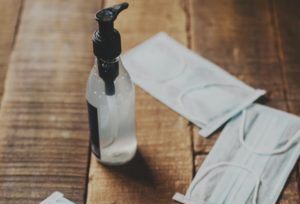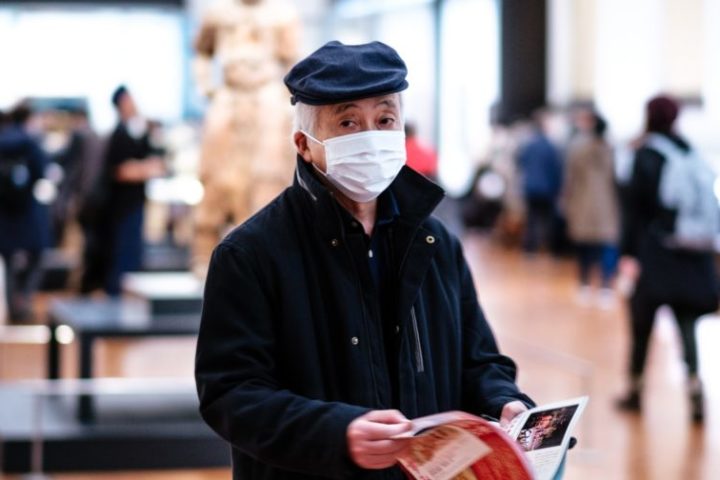As lockdowns gradually come to an end in several regions and countries, museums have to revise and update their health security protocols to reopen properly. While national regulations vary depending on the specific evolution of the COVID-19 pandemic, there are some basic measures that can be taken to protect the health of both visitors and staff.
Preparing for the arrival of the public
- Define a maximum number of visitors allowed into the museum and inform the public about it
- Define a maximum number of visitors per exhibition room and inform the public (it is recommended to set a maximum number of people per square meters to allow a safety distance of 1.5 m between each visitor)
- Determine average visit time to establish time slots
- Consider a gradual reopening of exhibitions
- As far as possible, set up a booking system (online, by phone and/or by e-mail). Set up an online ticketing system. Online tickets can be scanned by visitors themselves at the entrance to the museum
- Consider extended opening hours
- Consider opening hours dedicated to certain groups of public (e.g. > 65 years of age)
- Deny access to persons showing symptoms of the disease
- Notify the public of context-related restrictions on the institution’s website (if applicable) and before entering the museum
Public access – adapting the flow of visitors
- Avoid or manage lines at entrances and counters
- Consider ground markings for lines to ensure that the recommended distance of 1.5 m is maintained
- Ensuring distance between visitors and reception counters, possibly installing glass to protect staff and visitors
- Close the cloakrooms requiring the presence of staff (lockers can remain available if they are disinfected regularly between uses) to avoid unnecessary handling and contact
- Ensure that separate flows of entrances and exits are maintained and provide a one-way tour of the rooms (if possible)
- Guided tours and educational offers can be provided if the safety distance between participants is respected. If this is the case, define specific time slots for group visits and restrict their size
- The openings of common commercial areas (cafeteria, bookshop, shops) are subject to specific national regulations

Public access – strengthening health measures
- Install hand sanitizer dispensers at the entrance of the museum and provide warning signs to encourage visitors to respect the health measures in force
- Ensure that visitors have access to toilets (allowing them to wash their hands with soap and hot water and giving preference to disposable hygienic material in this respect) and adapt this access to the rules of social distancing in force (marking on the ground, etc.)
- Ensure that devices such as audio guides, headphones and other similar equipment that require handling are systematically disinfected after each use
- Disability-assisted facilities and exposed devices with control buttons for educational purposes should be cleaned frequently with disinfectants
- Interior doors will remain open (if possible). Otherwise, they must be disinfected each time they are used
Public access – restricting some access if necessary
- Restricting access to rooms and facilities that cannot be fully cleaned or disinfected
- Closing installations (e.g. contemporary art) that involve visitor interaction
- Lifts must be reserved for persons with reduced mobility, ensuring that the distance of 1.5 m is respected between each user. The control buttons must be disinfected after each use
- If the common areas do not allow the application of the rules of social distancing, an adjustment of timetables and traffic could be considered

Reception and security staff
- Security staff must be present at the reception desk and in the museum rooms to ensure not only that there is sufficient distance between the visitor and the works on display, but also to make sure there is sufficient distance between visitors themselves. If necessary, to guarantee the safety of the works and visitors, the teams can be supplemented by additional staff
- Provide staff with adequate protective devices (cash register protection, masks, disinfectants), mandatory condition for opening to the public
Cleaning and conservation measures
- Increase cleaning intervals according to national regulations
- All areas of the museum accessible to the public will be cleaned daily, as a minimum
- To ensure the conservation of museum collections, see also the updated recommendations on the subject
In the office
- Consider sustainable adaptation of emergency plans
- Extend work loans to minimize movement, handling, and transportation
- The areas accessible to staff will be cleaned in accordance with national guidelines
- Common equipment used by several staff members will need to be disinfected regularly. In the absence of disinfection standards, this equipment shall not be used
- Staff will clean their workplace daily with alcohol-based wipes or paper towels, regardless of the cleaning service in place
- Any employee whose activity does not require an on-site presence will continue to work from home and in accordance with national regulations
